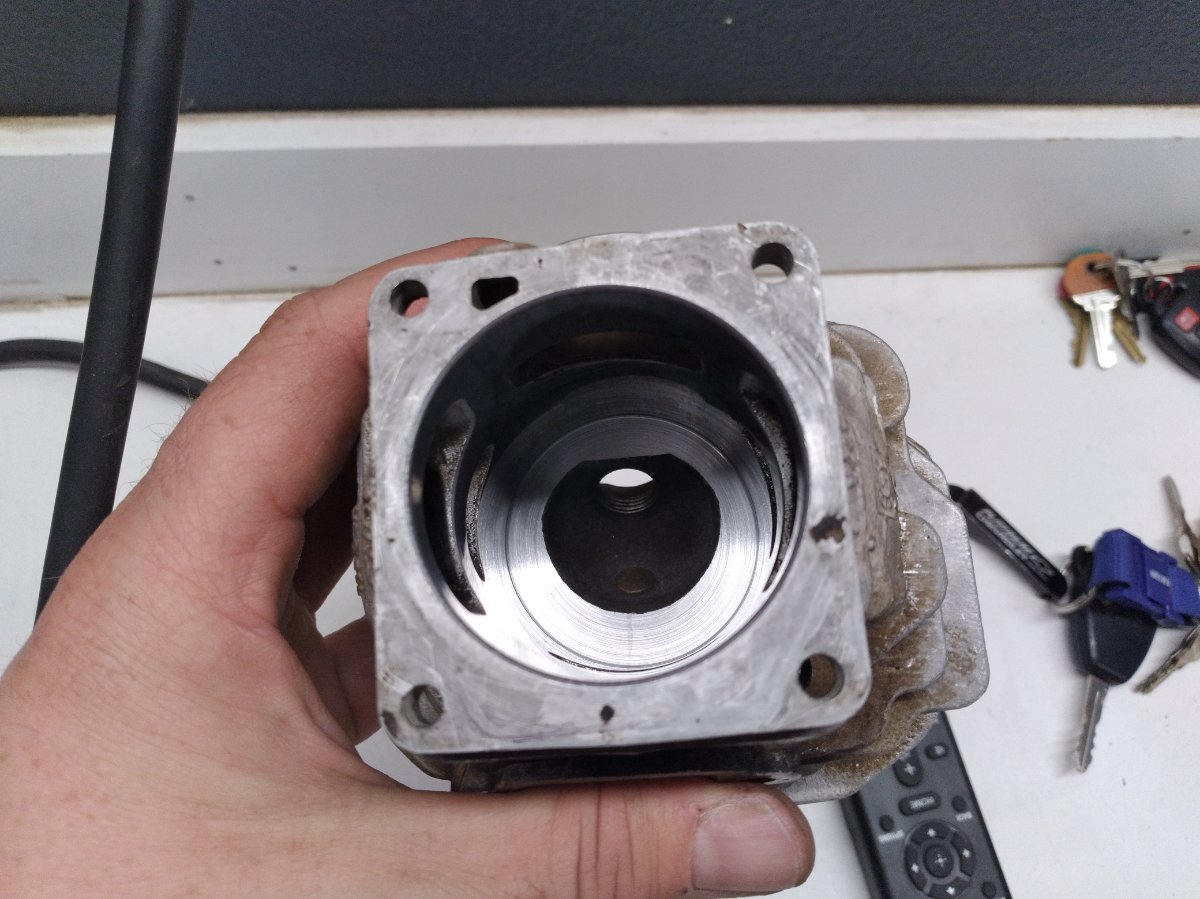I do have a junker craftsman saw that I am looking to learn on but that is beside the point. I’m more looking for a general consensus on certain aspects of saw modding/building. For instance, if it was going to be in the format of the link provide in the original post it would look something like this:
1) Get your saw in good tune. All OEM parts with no leaks, etc, etc, etc
2) Muffler Mod. (General description/guidance)
3) Porting. (General description/guidance)
The list can go on. I understand that there may be some things that are different for every saw but as sierra rider said “Virtually all modern saws benefit from a freer flowing exhaust.” That is more of the general rules I’m looking for
Best I can say is, obviously have it in a good tune, mechanically sound condition, etc...if all that is done then:
On exhaust mods, the general rule of thumb is to have the exhaust outlet on the muffler to equal about 80% of the exhaust port opening. I do considerably larger openings than 80%, but I have to put restrictive spark arrestor screens in mine, so I aim to equal it out. Minimize the restrictions in the muffler, get rid of deflectors, cats, etc. Some of my saws came with really restrictive mufflers, and just gutting and opening up the muffler has made the run like completely different saws.
Some saws benefit from a timing advance, some don't...I've found my older Stihls benefit and most of my newer saws don't...but that's only a generalization.
As far as porting...I think there really are 2 parts to the equation. First is the actual ports. You can clean stuff up with a dremel as long as you don't change timing...but the gains are going to be minimal, unless the ports were egregiously rough in that particular cylinder. I wouldn't mess with timing until you understand how it affects the power...also get a degree wheel and know how to use it. Too high of an exhaust port, you'll have a really peaky powerband that revs like crazy, too low of an intake, you can end up with a lazy saw that spits fuel back...finding that middle ground is key. IMO, getting the transfer ports correct is possibly the biggest porting gain to be had...it's also a dark art that I don't completely understand.
The 2nd part of the porting, is the machining of the cylinder. If you're working on a clamshell saw like a Craftsmen, there really isn't an easy way to change this...but easily done on a pro saw with mag cases. Squish band is something that can be improved on a lot of saws. I generally shoot for .018-20" range on smaller saws, and the .025-.030" range on my larger 60+cc saws. Base gaskets are generally in the .020" range, so a base gasket delete is possible as long as you have room in the squish for it.
Example: the Echo 2511 I'm currently working on: It has a really wide stock squish of .042"...the base gasket is .020" on the dot. If I deleted it, I'd be at .022" squish+ a few thousandths of Motoseal. So probably in the .026-27" range if I did a delete...not totally ideal for a small cylinder like the 2511, but way better than the stock .042". In this case, I'll actually run a base gasket, so I'll aim for .022" off the base on the cylinder, on my lathe.
Another example, my 201tcm I did: Stock squish band was at .028" range. It has a transfer tunnel that came down and didn't allow me to deck the cylinder without cutting off the tunnel...so I decided to leave the tunnel in place and not cut off the tunnel. If I just did a base gasket delete, I'd be down to .08" squish, which is too tight. So I cut about .015" out of the combustion chamber and did a base gasket delete...with a bit of motoseal, I was right at the .020" mark for squish.
Something to consider about decking the cylinder or doing a gasket delete...you're effectively moving the port timing when you do it. Intake will open sooner, exhaust and transfers will open later. It's usually not much, just a couple degrees, but someting to factor in.
Full disclaimer, I'm just an amateur at this, an educated one, but still learning it myself. If a true porting expert/professional has anything to contradict me, I'm all ears.





